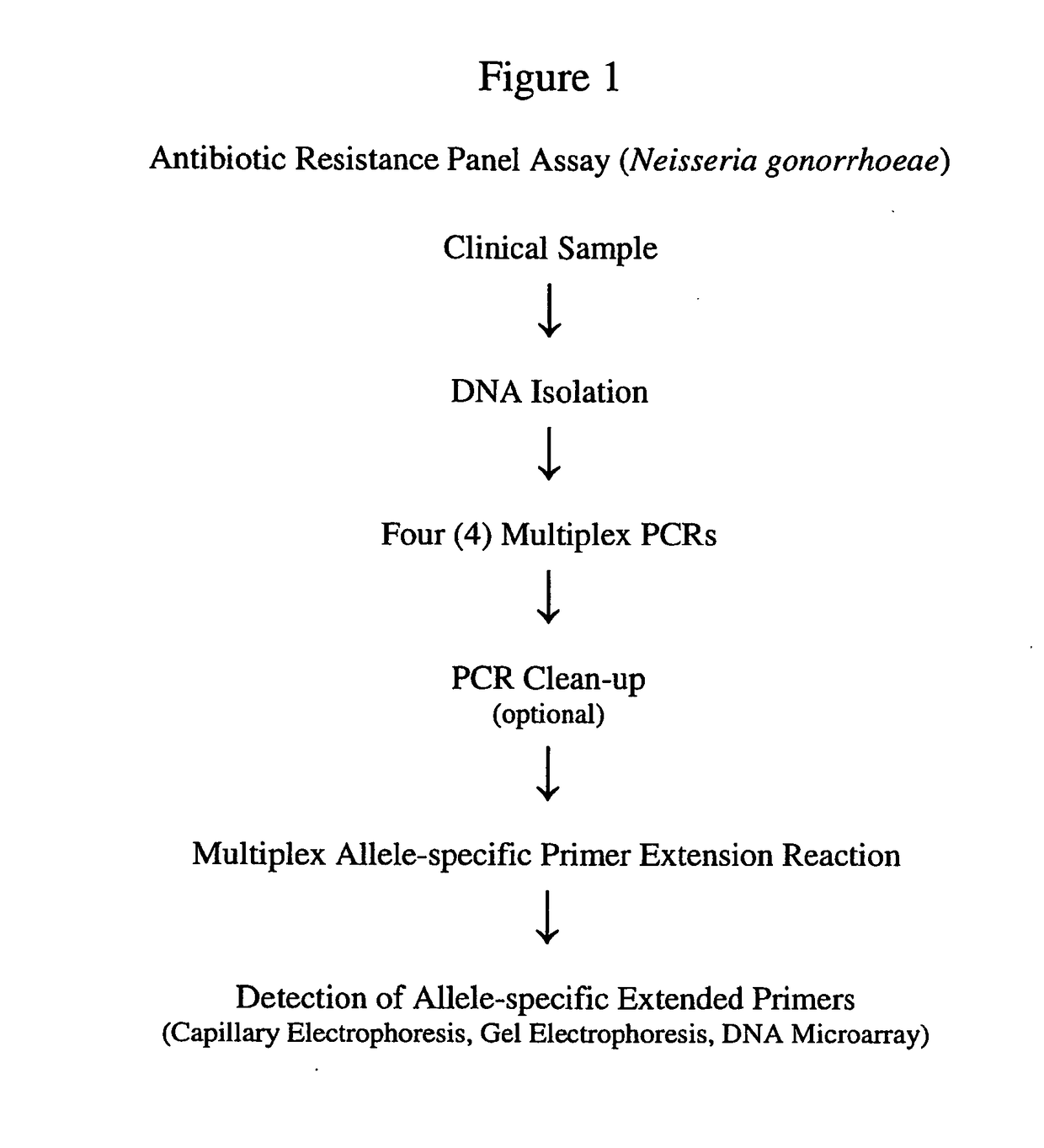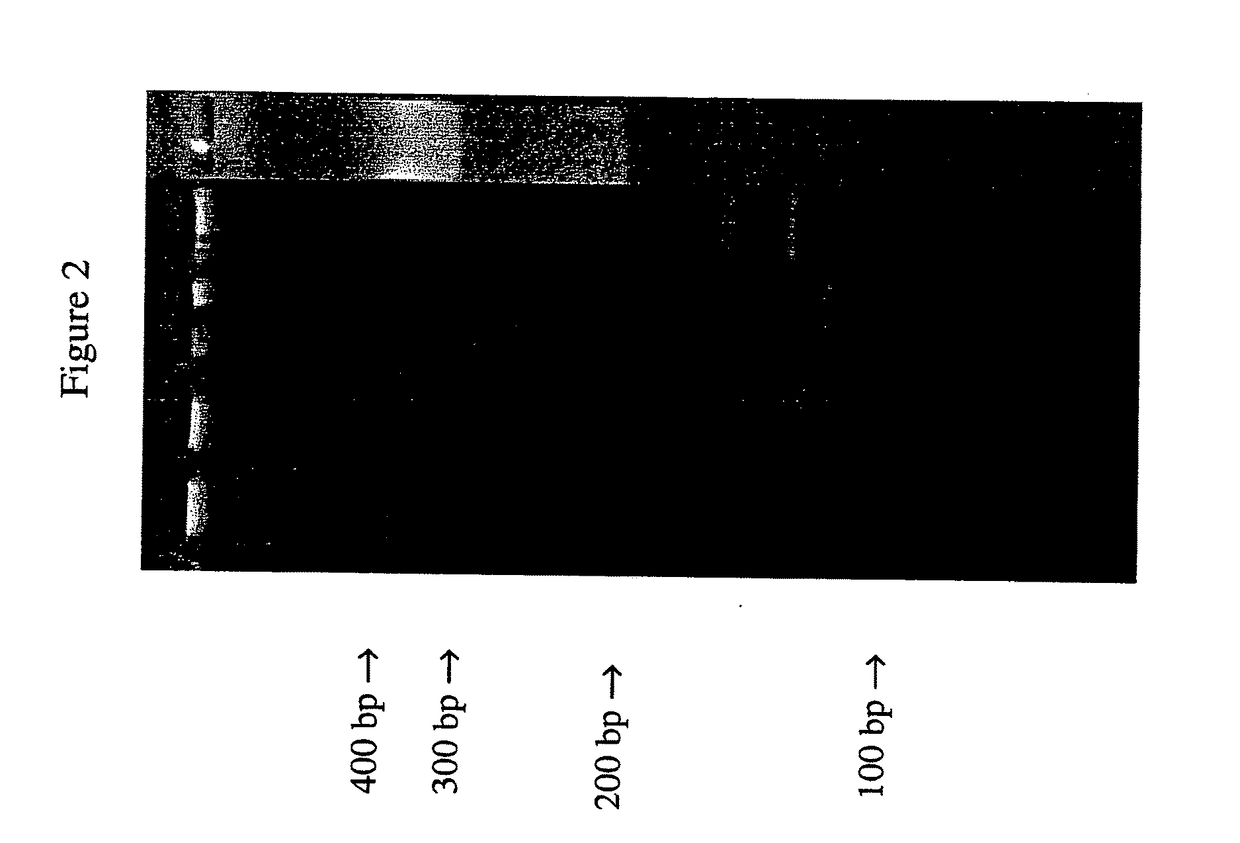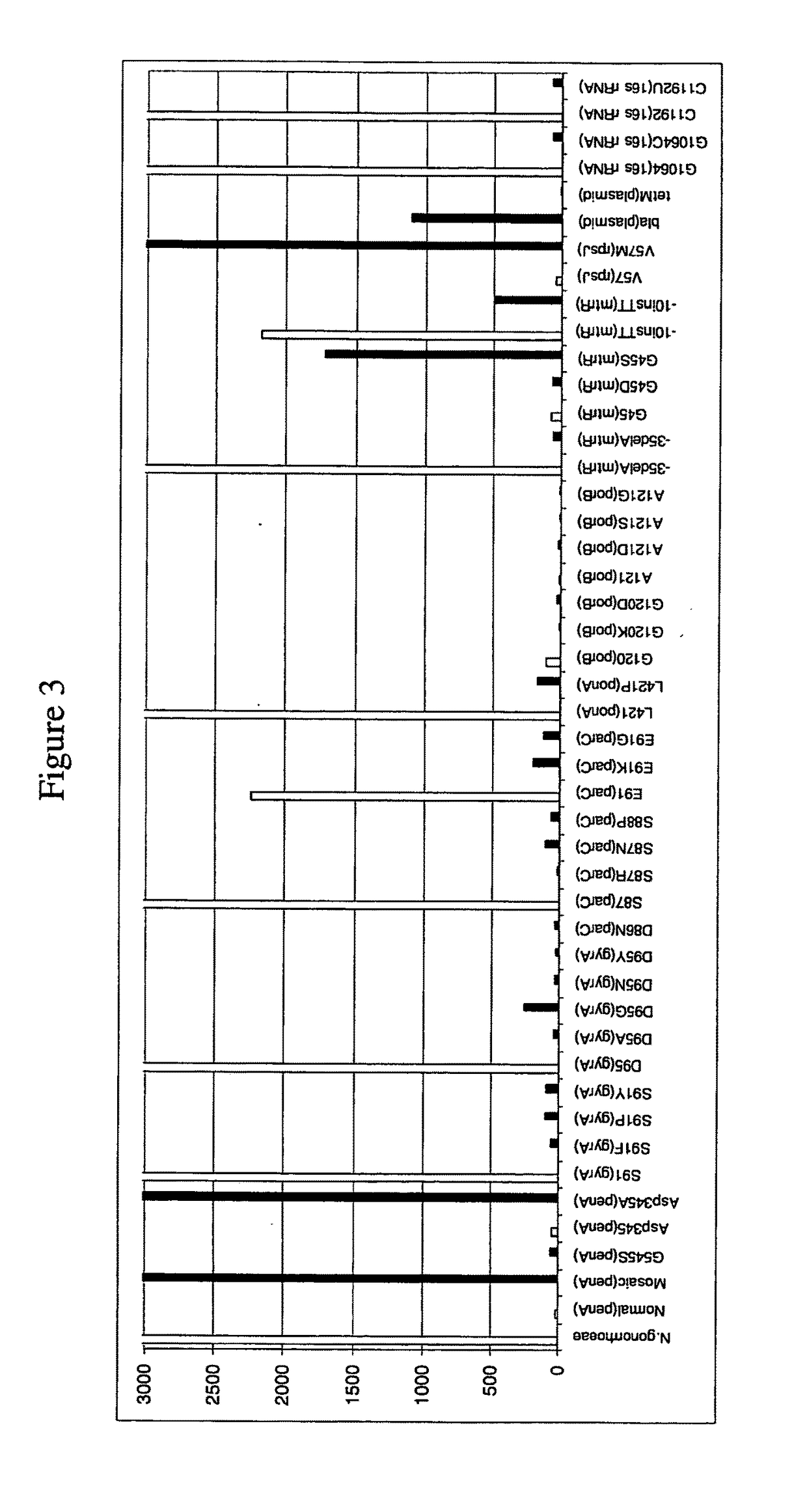Antibiotic resistance profile for neisseria gonorrhoeae and use of same in diagnosis and treatment of gonorrhea
- Summary
- Abstract
- Description
- Claims
- Application Information
AI Technical Summary
Benefits of technology
Problems solved by technology
Method used
Image
Examples
example 3
PCR Clean-Up
[0131]It is optional to clean-up the amplicons generated after the four (4) multiplex PCRs, prior to the multiplex allele-specific primer extension reaction. In this example, we performed the optional step.
[0132]After the multiplex PCR, Exo-SAP was added directly to the PCR products. The reaction mixture was incubated at 37° C. for 15 minutes (See, FIG. 1). Exo-SAP reagent was designed for simple, quick PCR clean-up for downstream applications, such as Single Nucleotide Polymorphism (SNP) analysis. When PCR amplification was complete, any unconsumed dNTPs and primers remaining in the PCR product mixture may interfere with these methods. Exo-SAP aided to remove PCR contaminants. After Exo-SAP treatment, excess Exo-SAP was inactivated by heating to a temperature of 80° C. for 15 minutes.
example 4
Multiplex Allele-Specific Primer Extension—Primer Design
[0133]Using primers listed in Example 2, multiplex PCR were performed to simultaneously PCR amplify multiple regions (i.e., 3 sites) of several genes. In this example, we optimized our assay for multiplex detection of SNPs (or mutations / genetic markers) at various positions for respective genes (details of the 10 genes and 30 mutations / genetic markers are provided in Table 1).
[0134]To achieve this goal, we employed allele-specific primer extension for multiplex detection of SNPs.
[0135]A) Criteria for Primer Design
[0136]Allele-specific primers were designed using BatchPrimer3 v1.0 web based software. The 3′ terminal base of the allele-specific primer sequences was designed to match either the normal or the mutant base in the Neisseria gonorrhoeae chromosomal allele sequence. Annealing of an allele-specific primer sequence to its matched Neisseria gonorrhoeae chromosomal allele sequence permits the primer extension reaction to oc...
example 5
Multiplex Allele-Specific Primer Extension Reactions
[0146]Using the selected primers (Example 4), we performed multiplex allele-specific primer extension reactions. The allele-specific primer extension reaction was performed in a single vessel, which contained a total volume of 20 μl. The multiplex allele-specific reactions contained 1×PCR buffer (Invitrogen, CA), 1.25 mM MgCl2, 100 nM of each primer, 5 μM dATP, dTTP, dGTP (Invitrogen, CA), 5 μM biotin-dCTP (Invitrogen, CA), 1 U of Tsp DNA polymerase (Invitrogen, CA), and 5 μl of purified multiplex PCR products from all four (4) multiplex PCRs as templates.
[0147]Thermal cycling conditions for extension reactions were performed in a Biometra 3.0 PCR System (Biometra, Germany) programmed for an initial cycle of 1 min at 95° C. followed by 35 cycles of 30 sec at 95° C., 30 sec at 55° C., and 30 sec at 72° C. A final 10 min extension step was performed at 72° C.
PUM
| Property | Measurement | Unit |
|---|---|---|
| Mass | aaaaa | aaaaa |
| Fraction | aaaaa | aaaaa |
| Fraction | aaaaa | aaaaa |
Abstract
Description
Claims
Application Information
 Login to View More
Login to View More - R&D
- Intellectual Property
- Life Sciences
- Materials
- Tech Scout
- Unparalleled Data Quality
- Higher Quality Content
- 60% Fewer Hallucinations
Browse by: Latest US Patents, China's latest patents, Technical Efficacy Thesaurus, Application Domain, Technology Topic, Popular Technical Reports.
© 2025 PatSnap. All rights reserved.Legal|Privacy policy|Modern Slavery Act Transparency Statement|Sitemap|About US| Contact US: help@patsnap.com



